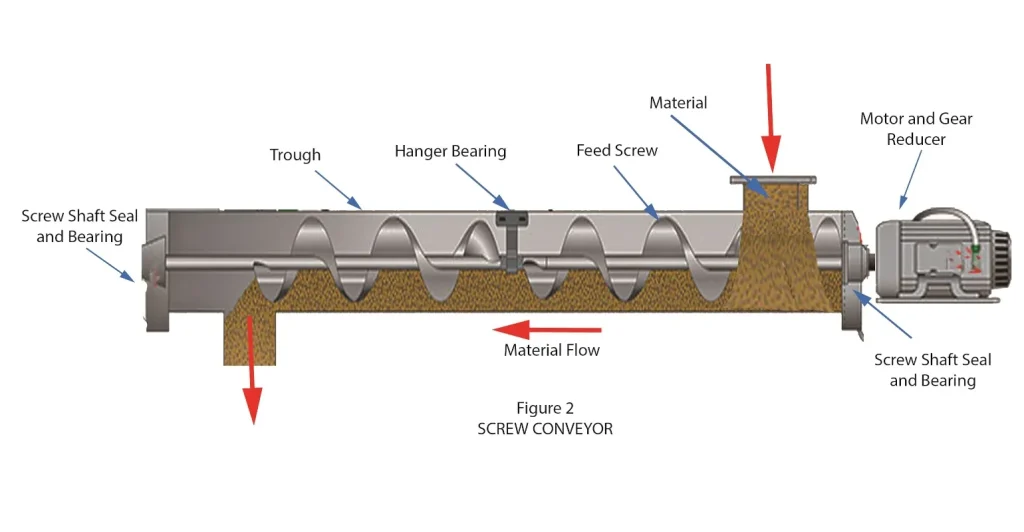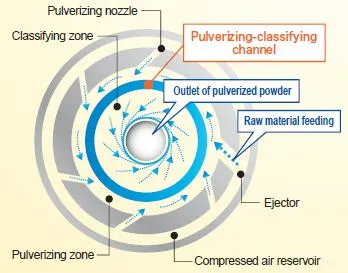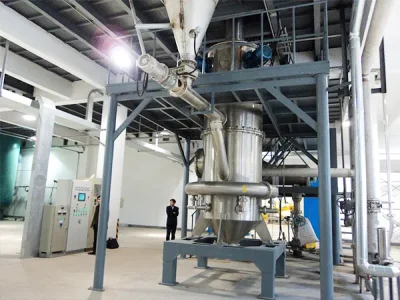Feed rate and air pressure are two key factors in micronizer pabrik jet operation. They have a direct impact on grinding efficiency and production capacity. Properly adjusting and optimizing these parameters is essential to achieve the desired particle size distribution, improve product quality, and reduce energy consumption. Understanding how feed rate and air pressure individually and jointly influence the grinding process is vital to getting the best performance from the mill.
Feed Rate

The feed rate refers to the amount of material fed into the micronizer jet mill over a certain period. Controlling this rate ensures the mill runs smoothly and grinds efficiently. In most setups, the feed rate is regulated by a screw feeder, which delivers the material consistently and accurately.
Several factors affect the ideal feed rate: The properties of the material, such as hardness, moisture content, and original particle size, influence how fast it should be fed. The specific model and capacity of the micronizer jet mill determine the maximum and optimal feed rates. The target fineness and production output requirements guide how the feed rate should be adjusted.
To optimize feed rate: Adjust the screw feeder speed based on production goals and energy consumption limits, aiming for stable and efficient milling. During startup or troubleshooting, gradually change the feed rate while observing the mill’s performance and product quality. This helps identify the best operating range.
Air Pressure
Air pressure in a micronizer jet mill is the force of compressed air. It’s used to create high-speed airflow inside the grinding chamber. This airflow velocity and energy are crucial for effective grinding. The air pressure is typically supplied and controlled via an air compressor, which must provide stable and adjustable pressure levels.

Several factors influence the choice of air pressure. Characteristics of the material, including hardness and how it breaks, affect the airflow needed. Grinding goals like desired particle size or purity require different pressure settings. The equipment design, such as nozzle size and chamber shape, also plays a role.
To determine the right air pressure: Set the classification wheel speed according to the target particle size, then establish the corresponding range of air pressure. Choose air pressure based on material type, whether it’s single crystal, polycrystalline, or prone to agglomeration. In operation, slowly adjust the air compressor pressure while monitoring grinding quality and energy use to find the balance that yields optimal results.
Keep in mind that if the air pressure is too high, it can create excess fine powder that’s hard to manage and increase operational costs. Too low air pressure results in insufficient grinding energy, producing subpar results.

Ringkasan
Successfully running a micronizer jet mill requires a balanced approach to feed rate and air pressure. By considering factors such as material properties, mill model, and grinding targets—and by using tools like the screw feeder and air compressor to make precise adjustments—the mill can operate at peak efficiency. This results in better product quality, higher output, and lower energy consumption.
Epic Powder’s Expertise
Pada Bubuk Epik, we offer advanced micronizer jet milling systems equipped with precision control for both feed rate and air pressure. Our solutions feature reliable screw feeders for steady material supply and efficient air compressors for optimal airflow. This allows customers to easily dial in the best settings for their specific grinding needs. By combining cutting-edge technology with extensive industry knowledge, Bubuk Epik helps clients achieve consistent particle size distribution, improved productivity, and reduced operating expenses. We are proud to support fine grinding and powder processing industries with equipment designed for excellence.